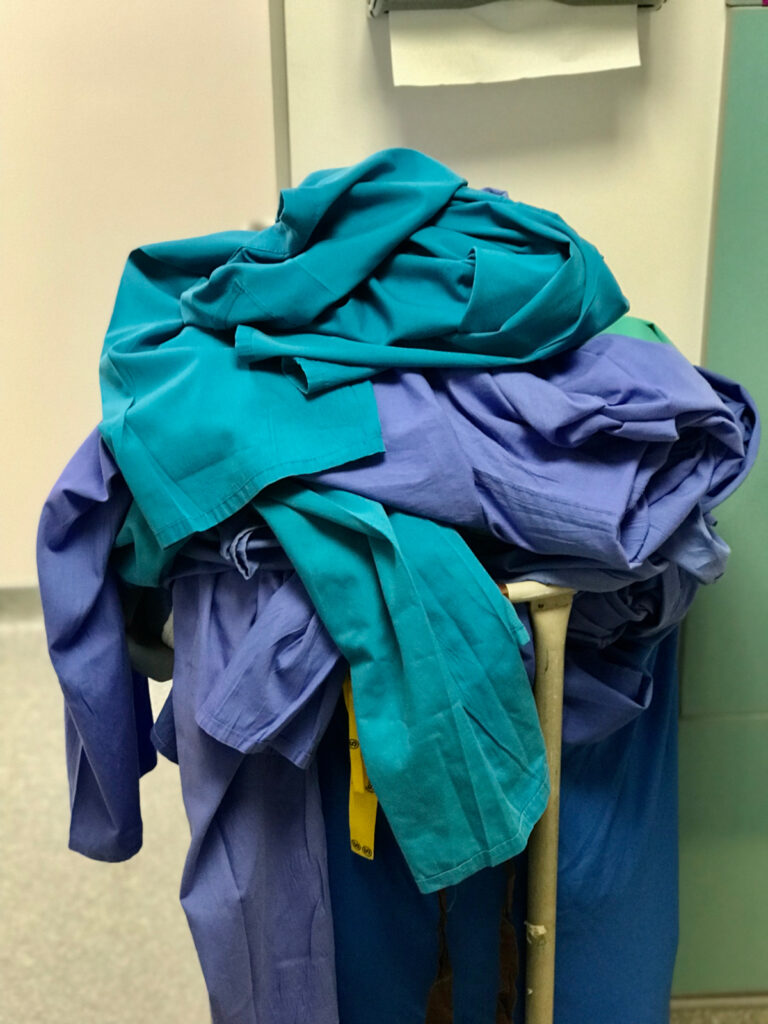Supply chain leaders examine how their health systems are handling clinical and non-clinical personnel deficits
February 2022 – The Journal of Healthcare Contracting
By Daniel Beaird
Recently in California, the state’s department of public health temporarily changed its coronavirus guidelines to allow asymptomatic, COVID-19 positive healthcare workers back to work without isolating or testing. The guidelines were in effect from Jan. 8 to Feb. 1 to curb the critical staffing shortages experienced across the healthcare continuum, the state health department stated. The California Nurses Association criticized the decision.

Many healthcare workers burned out by the pandemic have quit. Many that remain have tested positive for the coronavirus and are isolating. Healthcare facilities are busier than last year due to more demand for non-COVID related care. Where does this leave the nation’s health systems with staffing issues? How are they being mitigated?
The Journal of Healthcare Contracting (JHC) surveyed supply chain leaders from health systems about the medical staff shortages.
JHC: There are staffing shortages amongst hospitals in general. Clinician burnout along with the resurgence of COVID-19 in high infection regions has pushed workforce management to the front of the line. How are staffing shortages affecting how you take care of your patients?
George Godfrey, Corporate VP and Chief Supply Chain Officer of Baptist Health (South Florida): We take incremental steps to make certain that patient care is never impacted. This takes additional time and resources to properly manage staff scheduling and deployment.
Erik Walerius, Chief Supply Chain Officer of UW Medicine (Seattle, WA): Increased use of overtime and temporary labor to fill in staffing challenges to avoid clinical impacts.
JHC: Have noncritical services been cut back due to staffing shortages?
Steve Faup, Divisional Director, Supply Chain of Capital Health (Trenton, NJ): In some cases, there has been a scale back of available hours. An example would be Food and Nutrition Services. Their resources are focused on patient care. The pre-pandemic hours of operations and offerings for walkup service have been modified.
Godfrey, Baptist Health: At this time, only minimal cutbacks have been made to non-clinical services.
Walerius, UW Medicine: Earlier in the pandemic, supply chain services not directly related to clinical services were reprioritized to support pandemic-related efforts.
JHC: Have vaccine mandates contributed to staffing shortages?
Faup, Capital Health: There are many issues feeding the labor shortages. Mandates are contributing but probably not a significant factor.
Godfrey, Baptist Health: As an organization, we moved toward vaccine mandates for all employees during fall 2021. We created a vaccine campaign across the organization to provide not only the shots across our many hospitals and urgent cares, but also to provide information, research and clinical support for those employees who expressed reservations about the vaccine process. As a supply chain department, we reinforced the organization’s approach to get everyone vaccinated with strong, weekly communication to our teams to provide any necessary resources needed to get our team 100% vaccinated.
Walerius, UW Medicine: Yes, but minimal.
EDITOR’S NOTE: Healthcare workers covered by the Biden administration’s vaccine mandate will have until March 15 to be fully vaccinated in the 24 states where the requirement was reinstated by the Supreme Court. Twenty-five states and Washington, D.C., continue to face a Feb. 28 deadline for covered healthcare workers to be fully vaccinated, as the mandate had not been blocked in those states before the Supreme Court order that came down in January. The mandate, issued by the U.S. Department of Health Services’ Centers for Medicare and Medicaid – remains blocked in Texas (at time of publication).
JHC: How has pandemic burnout contributed to staffing shortages?
Faup, Capital Health: Absolutely, and it has become increasingly documented within a variety of industries and specific jobs. For example, nurses and truck drivers.
Godfrey, Baptist Health: We have seen vaccines within both clinical and non-clinical positions during the duration of this pandemic. The return back to a fully staffed team is slow, at best. We are nearly 24 months into a remarkable and relentless pace due to the pandemic, with a constant push and pull on all fronts of our industry, and people are fatigued. Additionally, the added lifestyle impacts of being remote and remaining socially distant for so long have added to the stress, strain and exhaustion of our troops. If you take all of those factors and add them to the historic amount of workforce that has left the employment pool, our ability to maintain a fully staffed supply chain team in some areas has been difficult.
Walerius, UW Medicine: An increase has been seen in early retirements and moves to other hospital departments and transfers have increased.
JHC: What are you doing to attract staff and stave off shortages?
Godfrey, Baptist Health: We have been very communicative as an organization regarding our needs for staffing across the network. The organization has increased the referral bonus for employees in an effort to get our current workforce to refer qualified candidates for internal opportunities throughout our network. Additionally, our internal HR, training and development teams have been very forthcoming with information about our own internal training and internship opportunities for clinical and pharmaceutical careers to promote, teach and train our own team members who may want to pursue those areas.
Walerius, UW Medicine: Strategies include hybrid and remote working for applicable jobs and extensive HR recruitment tactics.
UPMC launches in-house travel staffing agency to address nursing shortage
UPMC has created UPMC Travel Staffing, a new in-house travel staffing agency as a solution to the nationwide nursing shortage and to attract and retain highly skilled nurses and surgical technologists to its workforce. UPMC is believed to be the first health system in the country to launch its own staffing agency – initially for registered nurses and surgical technologists, with the potential to evolve to include additional job roles.
UPMC has brought in external travel nurses and surgical technologists to help at the bedside and in operating rooms throughout the past year. The goal of UPMC Travel Staffing is to rely less on outside agency staff and empower UPMC employees who would like to travel to UPMC hospitals across Pennsylvania, Maryland and New York – wherever and whenever the need is greatest. This new program will provide needed support for our frontline caregivers and career growth opportunities for UPMC nurses and surgical technologists interested in travel. Not only will the program be a retention tool for our current staff, it also will fuel a new pipeline to recruit nurses to UPMC and to bring people back who left UPMC, according to a release.
The advantages of this innovative program include competitive wages and excellent benefits that are unmatched by outside travel agencies, such as tuition assistance. The program also offers vast career growth opportunities and diverse clinical experience working and living temporarily in communities across UPMC’s footprint. UPMC Travel Staffing will rotate nurses and surgical technologists to different facilities for six-week assignments.

CDC guidance
In December 2021, as healthcare staffing shortages began to mount due to the transmissibility of the COVID-19 omicron variant wreaking havoc across the country the CDC issued guidance designed to enhance protection for healthcare personnel, patients and visitors, and address concerns about potential impacts on the healthcare system. Maintaining appropriate staffing in healthcare facilities is essential to providing a safe work environment for healthcare personnel and for safe patient care.
The CDC said when staffing shortages are anticipated, healthcare facilities and employers should use contingency capacity strategies to plan and prepare for mitigating this problem. They included:
- Adjusting staff schedules, hiring additional healthcare personnel and rotating personnel to positions that support patient care activities.
- Developing regional plans to identify designated healthcare facilities or alternate care sites with adequate staffing to care for patients with infection.
- Allowing asymptomatic personnel who had a higher risk exposure to COVID-19 and are not known to be infected with COVID-19 and have not received all vaccine doses to continue to work onsite throughout their 14-day post-exposure period.
- Allowing personnel with infections who are well enough and willing to work to return. Those with mild to moderate illness who are not moderately to severely immunocompromised and at least five days have passed since symptoms first appeared and at least 24 hours have passed since last fever without the use of fever-reducing medications, and symptoms have improved.
- If shortages continue despite other mitigation strategies, as a last resort consider allowing personnel to work even if they have suspected or confirmed infection, if they are well enough and willing to work, even if they have not met all return to work criteria.
